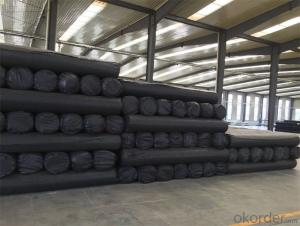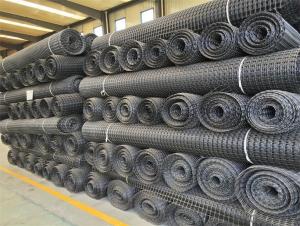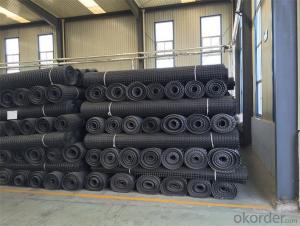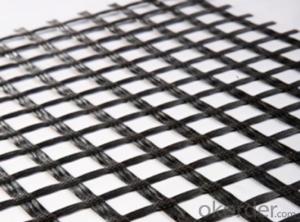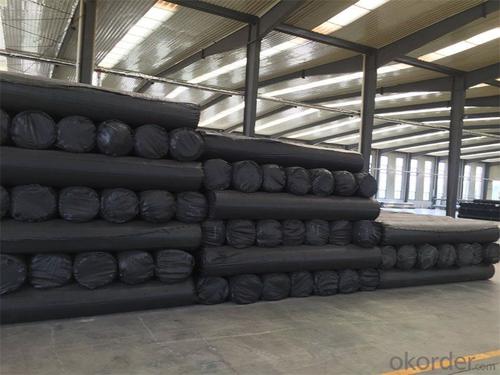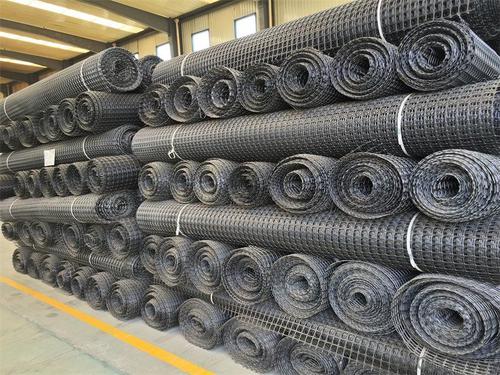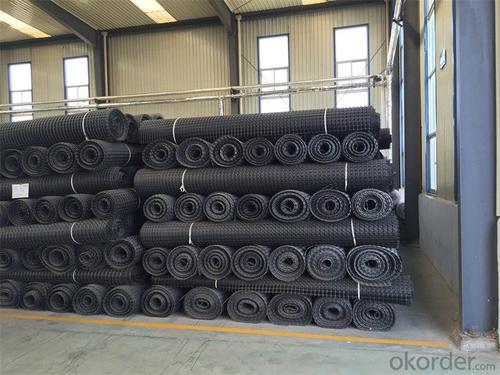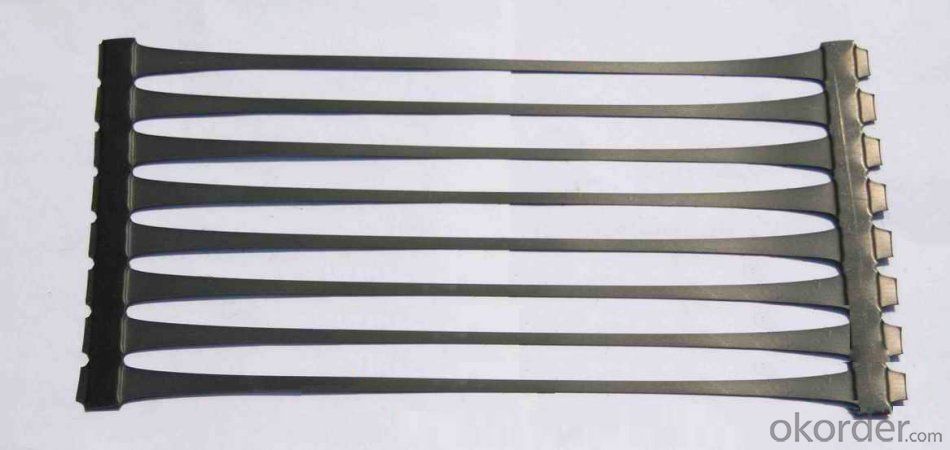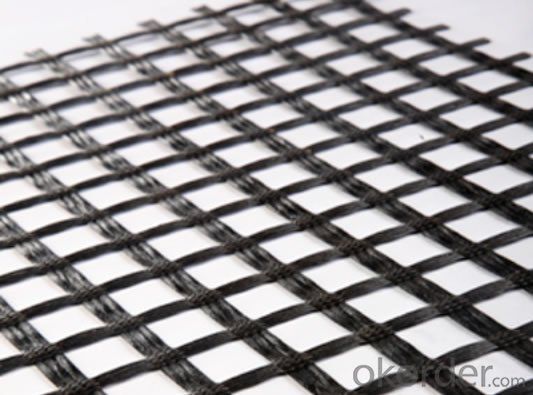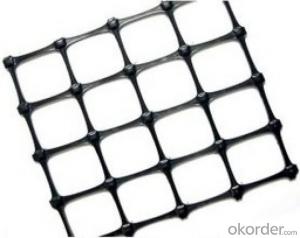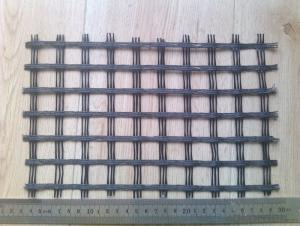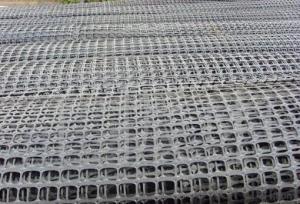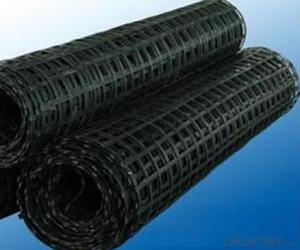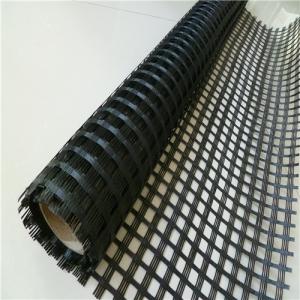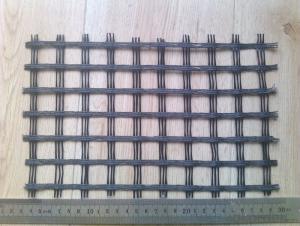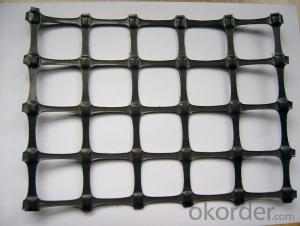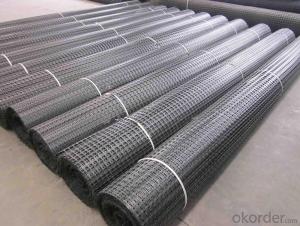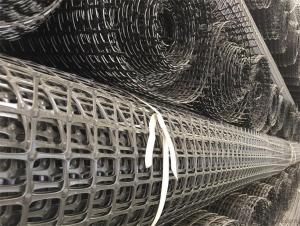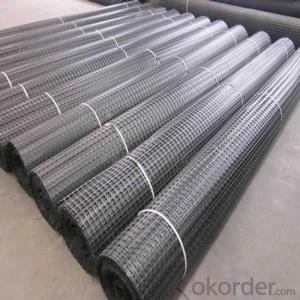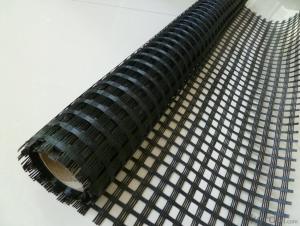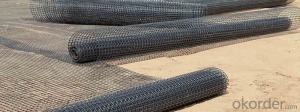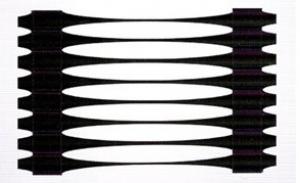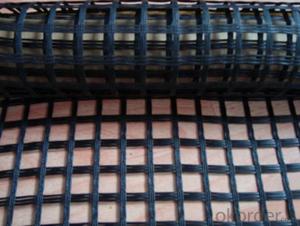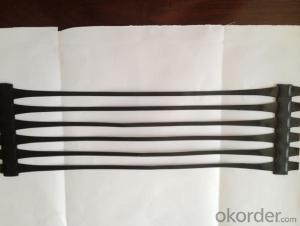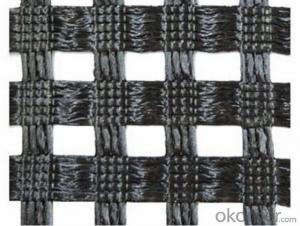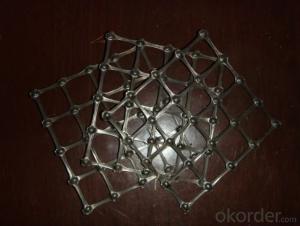Tenax Uniaxial Geogrids with Low Elongation and Good Toughness for Civil Engineering Construction
- Loading Port:
- China main port
- Payment Terms:
- TT OR LC
- Min Order Qty:
- 1000 m²
- Supply Capability:
- 10000000 m²/month
OKorder Service Pledge
OKorder Financial Service
You Might Also Like
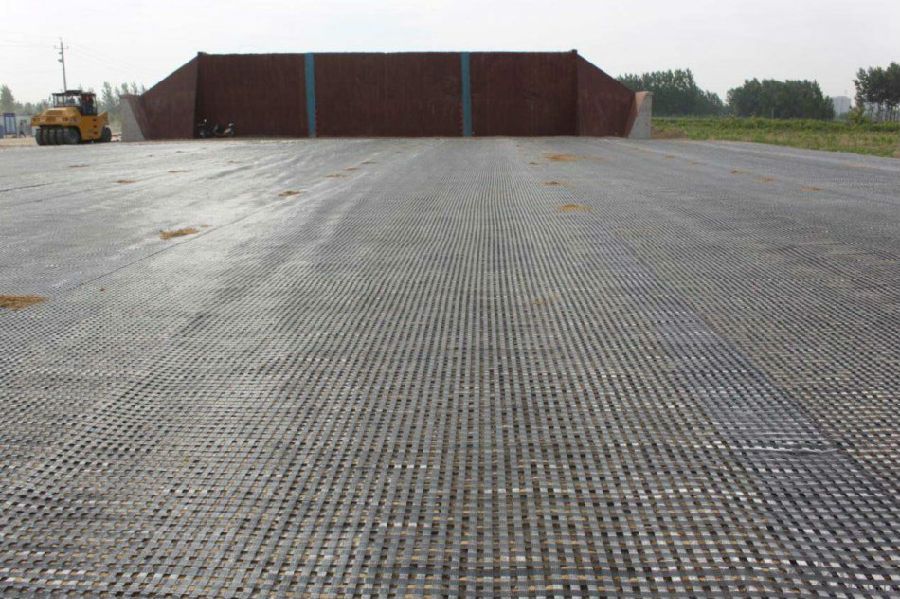
Introduction
Geogrid is widely used in civil construction over the whole world. It is manufactured on the basis of high-impact polyethylene and polypropylene. Geogrids are used as reinforcement materials on mellow soils for railway and car roads, parking places, landing grounds and for the reinforcement of bridge piers, slopes and earth banks, for erosion protection of slopes.
Material Major Advantages
Geogrid application is a way of soil reinforcement, On soil surface a plate is created according to the thickness of a corresponding geogrid: 50 mm, 100 mm, 150 mm, 200 mm (this standard range of products is manufactured by “Technostroytex” LLC).
Functioning principle: adhesion of grain material with grid meshes. This jamming causes resistance to horizontal soil displacement. Thus, it mobilizes bearing resistance of soft soils.
Our Service
Quality assurance
1.On a regular basis or as per your request,we entrust national testing agencies to conduct quality inspections
2. Strictly in accordance with the ISO9001-2008 international quality system standard,we monitor and manage the whole process throughout production,quality testing,and measurement to ensure product quality
3. For quality-related construction delay or substandard construction(except for damage or losses due to customer’s responsibility or irresistible natural disasters),we have refunding,replacement,and repair services.We will respond to customers’ feedbacks on quality issues within 24 hours.
Packaging & Shipping
Packing: PLASTIC FILM INSIDE, AND WOVEN BAG OUTSIDE
Shipping: About 15 days after receipt the deposit
FAQ:
Q: What kind of payments does jenor support?
A: T/T, L/C, Cash are accepted.
Q: Do you charge for the samples?
A: Accordeing to our company policy, the samples are free, we only charge the freight fee. And we will return the freight fee during the next order.
Q: Can you produce according to customers' design?
A: Sure, we are professional manufacturer, OEM and ODM are both welcome.
Q: Do you have other products?
A: Yes, please check the pictures:
- Q: How do geogrids prevent soil erosion?
- Geogrids prevent soil erosion by providing stability and reinforcement to the soil. They are typically made of high-strength materials, such as polyester or polypropylene, and are installed within the soil to distribute and transfer loads. This helps to increase the soil's resistance to erosion caused by factors like water flow or slope instability. The geogrids act as a barrier that holds the soil particles together, preventing them from being washed away or displaced.
- Q: Which is the most suitable for Highway Subgrade
- We are specializing in the production of geogrid. The words are basically according to design drawings, but if you use it, most or two-way plastic and steel grating, durable plastic relatively longer, of course, the price is higher; two-way plastic instead.
- Q: What is the typical weight of a geogrid roll?
- The typical weight of a geogrid roll can vary depending on the specific type and size of the geogrid. However, on average, geogrid rolls can weigh anywhere from 50 to 500 pounds.
- Q: What are the specifications of fiberglass geogrid for Asphalt Pavement
- 50KN is a relatively large number of glass fiber, of course, also depends on the road re design of the standard is to determine what the specifications,
- Q: Are geogrids suitable for use in soil reinforcement for bridge abutments?
- Yes, geogrids are suitable for use in soil reinforcement for bridge abutments. Geogrids provide stability, enhance load-bearing capacity, and prevent soil erosion, making them an effective solution for reinforcing the soil around bridge abutments.
- Q: Can geogrids be used in retaining walls for residential applications?
- Yes, geogrids can be used in retaining walls for residential applications. Geogrids are commonly used in retaining walls to enhance stability and improve the overall performance of the structure. They provide reinforcement and prevent soil erosion, which is crucial for the durability and longevity of residential retaining walls.
- Q: Do geogrids provide reinforcement to geosynthetic clay liners in waste containment facilities?
- Yes, geogrids can provide reinforcement to geosynthetic clay liners in waste containment facilities. Geogrids are typically used to enhance the stability and strength of geosynthetic clay liners, improving their ability to withstand lateral forces and prevent soil erosion.
- Q: Panzhihua steel plastic composite geogrid manufacturers, how much money, where to sell
- At the same time, the high molecular weight of polyethylene is also sufficient to resist ultraviolet radiation caused by aging. The grille stress aspect rib synergistic effect, can not generate node crack or damage
- Q: GDZ150 type one-way steel plastic welding geogrid D in the construction of the roadbed is horizontal paving also vertical spread?
- The direction of the pulling force is consistent with the direction of the road extension
- Q: How is a geogrid different from other geosynthetics?
- A geogrid is a type of geosynthetic that differs from other geosynthetics in its primary function and structural design. Unlike geotextiles or geocomposites that are primarily used for separation, filtration, or drainage purposes, geogrids are specifically designed to provide reinforcement and stabilization to soil and other materials. Geogrids are typically made of high-strength polymers and have a grid-like structure with open apertures, allowing them to interlock with soil particles and distribute loads more effectively. This unique design enables geogrids to enhance the mechanical properties of soils, increase their bearing capacity, and improve overall stability in various civil engineering applications.
Send your message to us
Tenax Uniaxial Geogrids with Low Elongation and Good Toughness for Civil Engineering Construction
- Loading Port:
- China main port
- Payment Terms:
- TT OR LC
- Min Order Qty:
- 1000 m²
- Supply Capability:
- 10000000 m²/month
OKorder Service Pledge
OKorder Financial Service
Similar products
Hot products
Hot Searches
Related keywords
